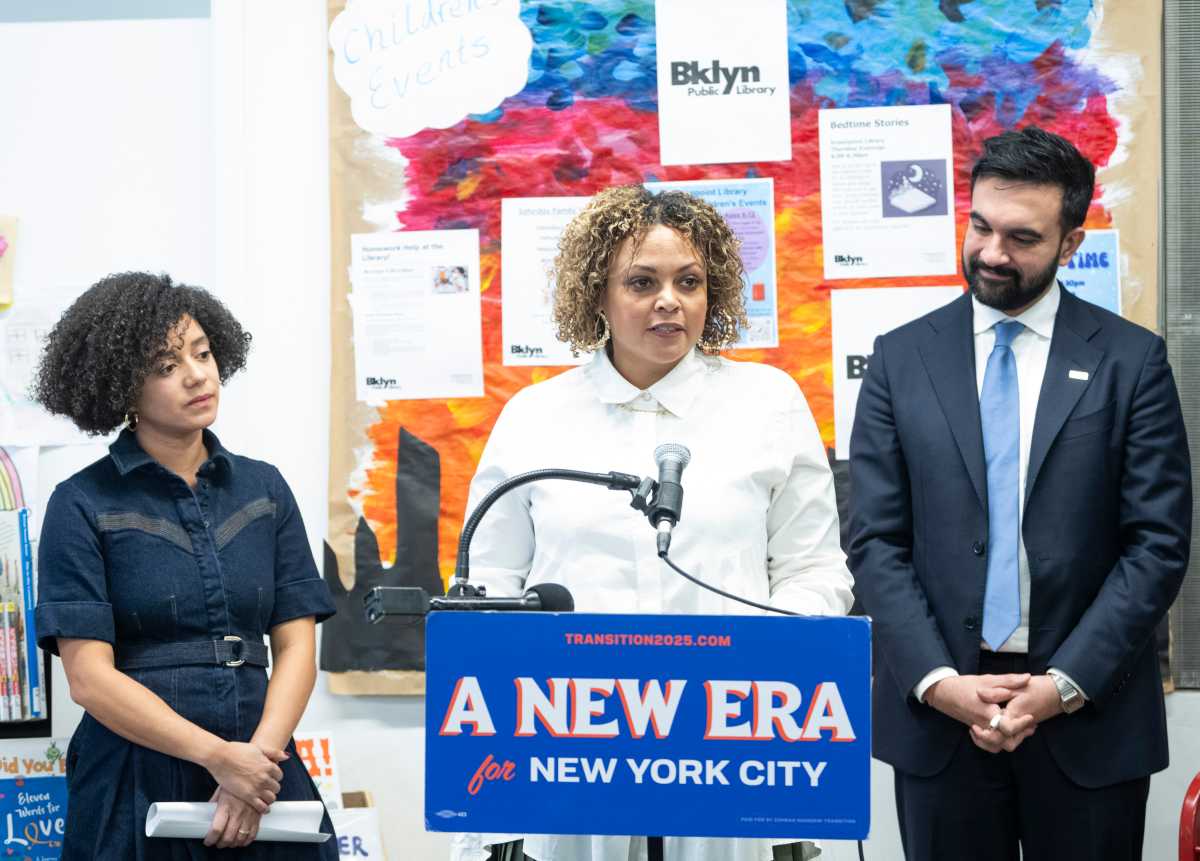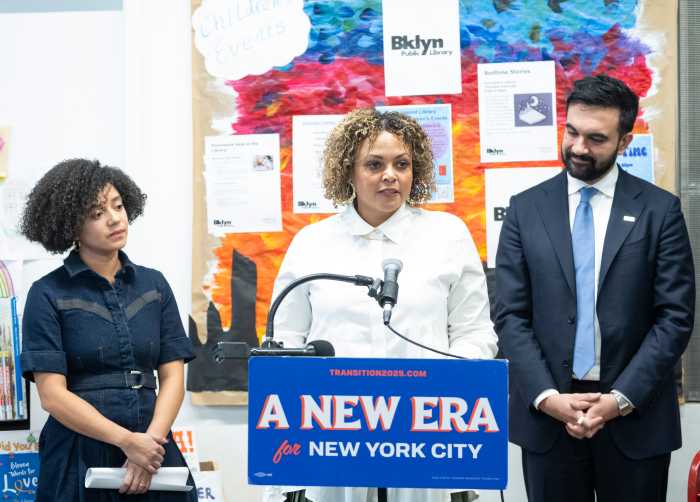Spring has sprung, and rabbits have hopped into the forefront of the season!
New York City and many other urban epicenters across the country are home to native rabbit species. But one species has the Big Apple all to itself: the eastern cottontail.
Of the 29 species of bunny found around the world, only the tremendously adorable eastern cottontail (Sylvilagus floridanus) is found in NYC—in all the boroughs, to be precise. And it’s an important species for our urban ecosystem, which is why NYC Parks will host Wildlife Viewing: Rabbits at Silver Lake Park in Staten Island on April 20, Easter Sunday — a most fitting day to celebrate rabbits.
New Yorkers of all ages will go on a tour with the Urban Park Rangers to look for bunnies, signs of bunnies and experience the joy of possibly spotting a bunny munching on some tasty green grass.
“Rabbits are an awesome grazer that we have here, including in our parks, and also sometimes people have small lawn space that they manicure by their house,” Anthony Denicola, a NYC Urban Park Ranger, said. “They like very grassy, easy to dig areas to build their nests.”
The tour is one of many hosted by NYC Parks to spotlight various wildlife species that can be found throughout the city.
Now, back to rabbits. Regardless of whether they are wild or domestic, rabbits are in the taxonomic order of Lagomorpha, and are scientifically known as “lagomorphs.” Despite popular belief, they are not rodents, but love to use their big teeth to crunch and chew things, just like many rodents do!
Protecting rabbits in the wild
Rabbits are more than just cute critters. They are important for a healthy, thriving ecosystem in the wild, whether in the marshlands of Florida, the fields of the Midwest or the bustling urban environment of New York City.
As herbivores, they help keep plant life in check. As a prey species, they are also a major food source for the predators found in NYC, including hawks from the sky and even foxes on the ground.

Cottontails are not facing localized population declines, but conservationists still urge New Yorkers to protect bunny habitat.
Denicola explained that one of the best ways to protect wild bunnies is to be alert for “dead spots” in lawns, parks and other grassy areas. What might look like a dry patch of grass can be a cozy nest of bunny babies, which are called “kits.”
“Sometimes those dead spots can be a very well-camouflaged rabbit’s nest,” the ranger said. “How you can tell is that the ground will usually be spongy. You might hear a little chirping from the babies. It almost looks like the grass is moving like a waterbed. The top is moving because the babies are moving underneath.”
And if you ever spot one of these nests with no mama in sight, don’t get alarmed! Chances are she’s out grazing, doing her usual rabbit errands, and will return.
Generally, mother rabbits only return to their nests up to seven times a day. But it could even be as few as one visit per day. As long as the mother feeds them and keeps them covered, she’s up for Mom of the Year in bunny world.
“Just because we don’t see them visiting, it doesn’t necessarily mean that they’re not taking care of their young,” Denicola said. “And the best thing you can do in that instance is usually to just let nature run its course and leave the nest alone. You don’t want to uncover it at all.”
The rabbit expert explained that the grassy overlay is protection from predators. (So as tempting as it might be to push away the grass to see baby buns, it’s best to just Google videos of them instead!)
Should you bring home a pet rabbit this Easter?
Denicola and other pet experts advise against impulsively adopting a pet bunny. As cute as they are, pet rabbits are a commitment that includes making sure the animal has everything he or she needs to survive, including fresh hay and water every day, frequent cage and habitat cleaning, lots of socialization and much more.
Denicola explained that domestic rabbits cannot survive in the wild, so letting one loose to live alone can have dire consequences for the animal.
“They can make their way back into the parks, which is unfortunate because they are not equipped with the skills they need to survive outside,” he said.

Fun bun facts
Rabbits, including the eastern cottontail, have an interesting biology that’s more than meets the eye. Take a look at this list of fun facts, study them, and impress your friends and family with your bunny knowledge this Easter!
Rabbits are not hares. They are two different species in the order of Lagomorpha.
Coney Island bunnies. It’s believed that Coney Island got its name from the Dutch word rabbit, “konijn,” because of the large population of bunnies that once thrived there.
Jackrabbits are actually not rabbits. They are hares. (Talk about confusing!)
Male rabbits are called bucks. A female is known as a doe, and babies are kits.
Rabbits are skilled athletes. They can run fast, up to 25 to 35 miles per hour.
They have great vision. Their eyes are on the sides of their head, allowing them to have an almost 360-degree view.
Their teeth never stop growing. Wild rabbits chew on different kinds of grasses to help wear down their teeth. Pet rabbits do the same by chewing hay.
They are (almost) worldwide. Different species of rabbits are found on every continent except Antarctica.
The Riverine rabbit, native to South Africa, is listed as critically endangered by the International Union for Conservation of Nature and Natural Resources. There are only about 200 to 380 left in the wild.






































